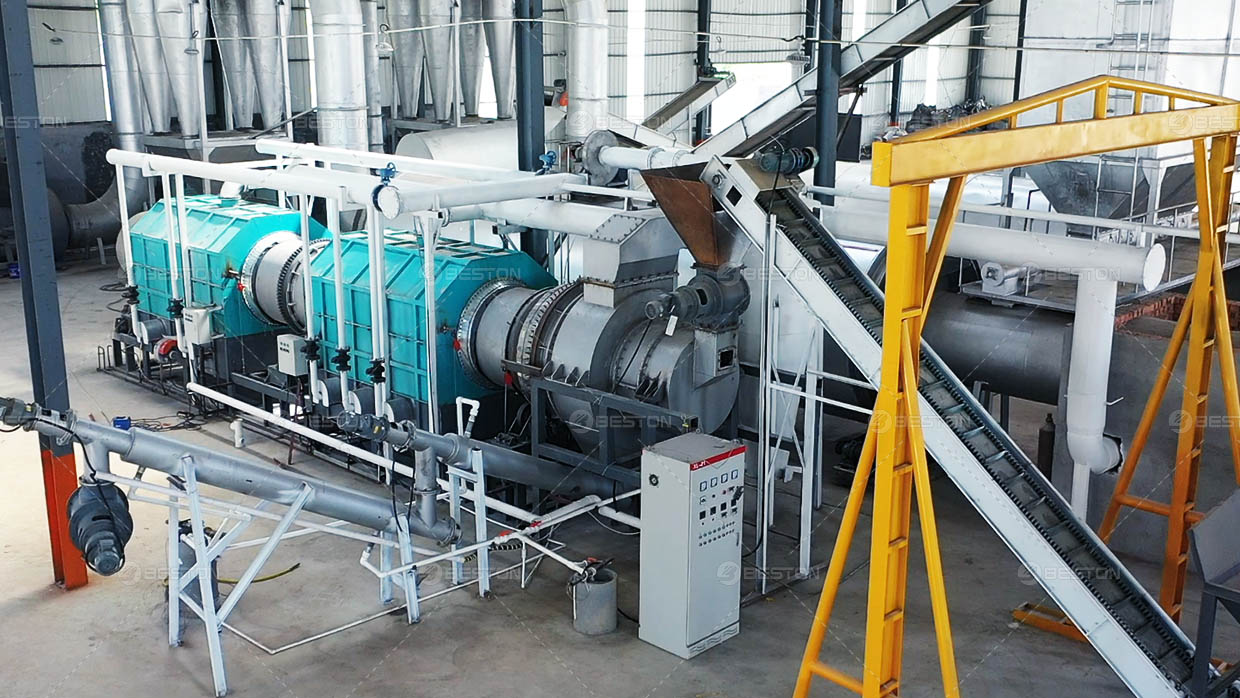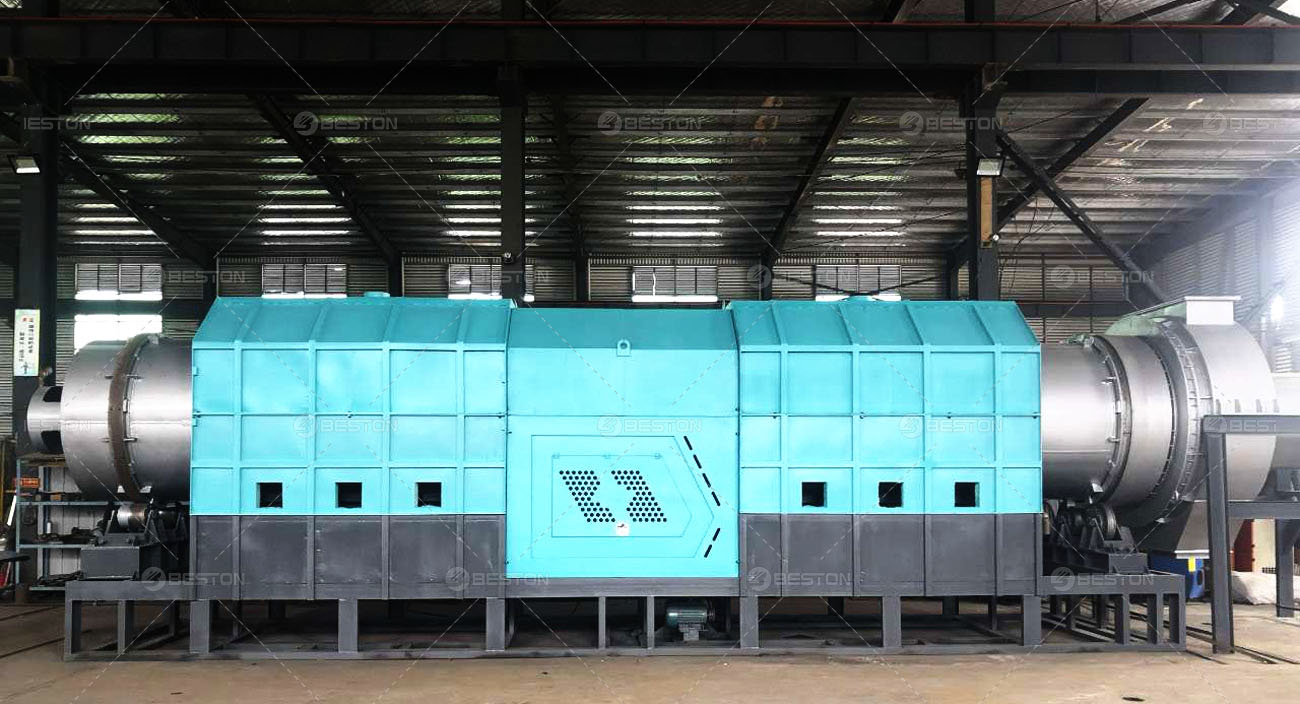Ensuring the optimal operation of a biomass pyrolysis plant is critical to achieving both environmental sustainability and economic viability. Pyrolysis is a thermochemical process that converts organic materials into valuable byproducts, such as biochar, bio-oil, and syngas. However, the efficiency of this process is heavily influenced by various factors, including equipment design, feedstock quality, and operational protocols. This article explores key strategies for optimizing the performance of a biomass pyrolysis plant to maximize both output and profitability.

1. Optimize Feedstock Quality and Preparation
The quality of the feedstock plays a pivotal role in the efficiency of a biomass pyrolysis plant. Different types of biomass—ranging from agricultural residues to forestry waste—contain varying moisture levels, particle sizes, and chemical compositions. These factors can impact the thermal efficiency and overall performance of the pyrolysis process.
To ensure consistent operation, it is crucial to preprocess the feedstock before it enters the pyrolysis reactor. Drying the biomass to reduce moisture content, for instance, is essential for maintaining the required temperature and preventing energy loss. Additionally, uniform particle size distribution can improve the combustion characteristics of the feedstock, facilitating more efficient heating and pyrolysis. Using a biomass pelletizer or crusher can help ensure that the material is consistently prepared, promoting smoother operation and higher yields.
2. Efficient Heating and Temperature Control
A fundamental aspect of maximizing efficiency in a pyrolysis machine for biochar lies in precise temperature control during the pyrolysis process. The pyrolysis reaction typically occurs within a temperature range of 400°C to 800°C, depending on the desired end products. Operating outside this range can lead to incomplete pyrolysis, resulting in lower-quality biochar or the loss of valuable byproducts like syngas and bio-oil.
To ensure consistent heat generation, invest in high-quality burners or heat exchangers that can provide stable temperatures throughout the system. Automated temperature monitoring systems equipped with real-time data analytics can help optimize the thermal environment inside the reactor. These systems allow operators to adjust parameters based on fluctuations in feedstock properties, thereby ensuring uniform processing conditions.
3. Maximize Syngas Utilization
Syngas, the gas produced during the pyrolysis process, is a valuable byproduct that can be used for energy generation or as a feedstock for chemical production. Instead of venting syngas into the atmosphere or flaring it off, integrating a syngas collection and utilization system within the biomass carbonization furnace can significantly enhance operational efficiency.
By using syngas as a supplementary fuel source for the pyrolysis process or converting it into electricity via gas engines or turbines, the plant can become more energy self-sufficient. This not only lowers external fuel consumption but also improves the plant’s overall carbon footprint.
Furthermore, efficient syngas management reduces the risk of safety hazards like explosions or toxic emissions, thereby contributing to smoother operations.
4. Continuous Monitoring and Automated Control Systems
Implementing real-time monitoring and automated control systems is another vital step in ensuring the efficient operation of a biomass pyrolysis plant. Sensors that track key parameters such as temperature, pressure, and gas composition can provide operators with real-time data, allowing for faster responses to changes in the system.
Automation can further enhance efficiency by adjusting operational parameters autonomously, based on the monitored data. For instance, automated systems can control the feed rate to ensure optimal biomass processing, or they can adjust the heat supply to maintain a consistent pyrolysis temperature. This not only reduces the chances of human error but also allows for 24/7 operation, ensuring maximum throughput and minimal downtime. To obtain advanced biomass pyrolysis plant, please visit: https://www.bestongroup.com/

5. Routine Maintenance and Equipment Upkeep
Preventive maintenance is crucial for maximizing the lifespan and operational efficiency of a biomass pyrolysis plant. A well-maintained plant operates with fewer breakdowns, resulting in increased uptime and reduced repair costs.
Key components, including the reactor, condenser, and gas filtration systems, should be routinely inspected for wear and tear. Regular cleaning of the pyrolysis chamber, heat exchangers, and condensers helps maintain the thermal efficiency of the plant, ensuring that heat is transferred optimally and the system operates at peak performance.
Additionally, it is essential to monitor the condition of the fuel supply system, the gasifier unit, and the collection pipes. Identifying minor issues early can prevent more significant, costly problems in the future, thus reducing downtime and improving the plant’s overall efficiency.
6. Energy Recovery and Waste Minimization
A critical factor in improving operational efficiency is the ability to recover and reuse energy within the biomass pyrolysis plant. Heat recovery systems such as heat exchangers, which capture waste heat from the pyrolysis reaction, can be used to preheat incoming feedstock or to generate steam for power production. This significantly reduces the demand for external energy sources, improving the plant’s self-sufficiency and reducing operational costs.
Another important consideration is the minimization of waste. Byproducts like tar, ash, and gases can be harmful if not managed properly. The efficient handling of these byproducts, either by recycling or utilizing them in other processes, can significantly reduce waste disposal costs and contribute to the overall sustainability of the plant.
7. Integration with Other Processes
A biomass pyrolysis plant does not operate in isolation. To enhance efficiency, consider integrating it with other processes, such as waste-to-energy systems, bio-oil refining units, or carbon capture systems. By aligning the pyrolysis operation with complementary technologies, a higher degree of energy efficiency and output value can be achieved.
For instance, coupling a pyrolysis plant with a bio-oil distillation unit can increase the value of bio-oil produced, making it suitable for use in various industries, such as chemicals, fuels, or pharmaceuticals. Additionally, integrating a carbon capture system can offset some of the CO2 emissions from the pyrolysis process, contributing to climate change mitigation efforts.
8. Operator Training and Expertise
Lastly, proper training for plant operators is essential for ensuring smooth operation. Operators should have a thorough understanding of the pyrolysis process, as well as the ability to recognize and correct deviations in performance. A skilled workforce can adjust parameters quickly, manage unexpected issues, and troubleshoot problems effectively, reducing the likelihood of costly errors.
